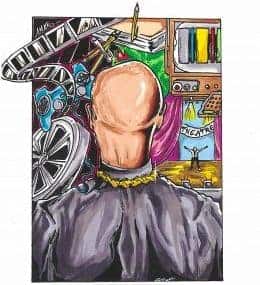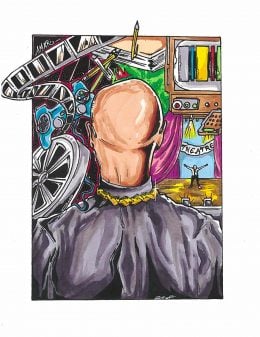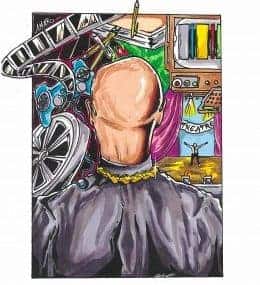Suzi Q – Review/ Summary
In “Suzi Q,” you get a profile of an innovative singer-songwriter-bandleader-multi-instrumentalist and poet: Suzi Quatro.

Spoiler Alert: This summary and review contains spoilers.
Additionally, some images and text may include affiliate links, meaning we may earn a commission or receive products if you make a purchase.
In “Suzi Q,” you get a profile of an innovative singer-songwriter-bandleader-multi-instrumentalist and poet: Suzi Quatro.
| Director(s) | Liam Firmager | |
| Screenplay By | N/A | |
| Date Released | 2019 | |
| Genre(s) | Documentary, Music, Biography | |
| Duration | 1 Hour, 40 minutes | |
| Rating | PG | |
| Noted Cast | ||
| Herself | Suzi Quatro | |
| Herself | Joan Jett | |
| Herself | Deborah Harry | |
| Himself | Henry Winkler | |
| Herself | Nancy Quatro | |
| Herself | Patti Quatro | |
This content contains pertinent spoilers.
Plot Summary
The documentary is a journey of Suzi Quatro’s career from an all-girl band in her native Detroit, Michigan, to worldwide success as the (underrated) female pioneer rock bassist. She’s an icon to many women in rock, such as Joan Jett, Lita Ford, and Cherrie Currie, formerly of the teenage girl-group The Runaways.
Prior to Suzi, there were women who were trailblazers as female musicians, such as Sister Rosetta Tharpe, a gospel singer who was known to play a mean, rockin’ guitar in her performances, and girl bands from the early-late 1960s such as The Liverbirds and Fanny, but for either a lack of acceptance, being tired of being on the road or a falling out from the pressures of trying to make it in the music industry, these bands fell by the wayside.
Other Noteworthy Facts & Moments
- 1st official documentary on the life and career of Suzi Quatro
- 1st female bassist to be a rock star
- Has sold more than 55 million records worldwide
- Received an honorary doctorate in music from Anglia Ruskin University, Cambridge, UK
- In 2010, she was voted into the Michigan Rock and Roll Legends online Hall of Fame.
Question(s) Left Unanswered
- Why, with SO much success in Europe, Australia, and Japan, where she had #1 and #2 level hits, did Suzi have a hard time being recognized in her native country? She did make it to the cover of Rolling Stone in 1975, and her highest-charted song was, “Stumblin’ In,” (with Chris Norman) from 1978, which got to #4 on the Billboard charts. Most of her other worldwide hits were at very low numbers on the Billboard charts or failed to chart at all!!
Collected Quote(s) or .Gifs
“I’m always bitterly disappointed that women rock groups are so bad. Although there are rock groups coming up in the States who are trying to lay down a kind of heavy feminist rock, but it’s nothing like the explosion of creativity that happens among the boys. Now everybody had a guitar—the girls just somehow never picked them up.” – Germaine Greer – Writer/Feminist in 1970.
“Most of the girls we lost along the way because they got bored with it or they didn’t want to take time out for the dating and they wanted to do something else…I gave up most of my early life to the business and a lot were not prepared to do this…very few make it.” – Suzi Quatro
“Let Me Be Who I Am….” – Suzi Quatro (Male music critics, early in her career, thought that as a pint-sized bassist fronting her own band, she was a puppet of male chauvinists, and they didn’t take her serious as a musician as she looked like the “hot rock chick” in her signature leather jumpsuit).
“a rocker, a brooder, a loner, a knife-carrier, a hell-cat, a wild cat…a refugee from the frightened city of Detroit.” – Philip Norman, journalist, Sunday Times
“It’s important to be validated by the ones you love.” (Suzi’s lament that her family didn’t appreciate the hard work she put in to make her rock n’ roll dreams a reality).
Highlights
Her Early Years in an All-Girl Group Led to Suzi Breaking Out in Europe
I was curious to find out more about Suzi, given that my memory of her was not as a musician, but as the character of “Leather Tuscadero,” in the 1970s TV series, “Happy Days.” I would watch the show, not sure if she was really playing the bass, but she did look convincing.
It was interesting seeing archival footage of a teenaged Suzi rocking in the all-girl band, The Pleasure Seekers, started by her older sister, Patti, with some girlfriends from high school. She is a petite woman, and the bass looked like it weighed her down, but she was comfortable and in command of her instrument. They had a local hit with “What A Way to Die,” which led to touring gigs around the country, and appearances on such TV shows as “The Ed Sullivan Show.” I’m sure that they were a novelty act in the eyes of many, to see them playing their instruments, looking cute and girly in their matching outfits. Later the band’s name changed to Cradle in 1969, owing to the group falling out of favor with the new music scene, which turned Suzi off and when an opportunity came to start out on her own in the UK in 1971, she took it.
There’s more archival footage of Suzi performing her hits and being interviewed regarding her career and role as a pioneer female rocker. Somehow, though, she wasn’t able to make it as a musician and recording artist in the States, having had only one major tour, with Alice Cooper in the mid-1970s and one hit record, “Stumblin’ In” in 1978, which got to #4 on the charts. She was ahead of her time, perhaps, TOO FAR ahead of her time, that she’s not as recognized as an innovator in her native country as she should be. If she hasn’t already been considered, she should be nominated for (and be inducted into) the Rock n’ Roll Hall of Fame.
It’s Well Balanced
I was glad to get to know Suzi better than her just having been “Leather Tuscadero” and singing “Stumblin’ In” in my memory.
Overall: Positive (Worth Seeing)
“Suzi Q” definitely is worth seeing to learn about what Suzi’s gone through as a woman in rock, especially as a pioneer who never backed down on fulfilling her dreams. Also, as someone who didn’t allow herself to be labeled or sidelined by any career or personal setbacks.


